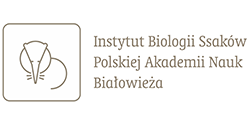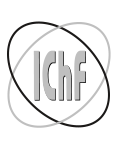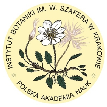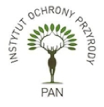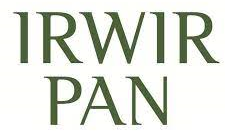- Wyszukaj w całym Repozytorium
- Piśmiennictwo i mapy
- Archeologia
- Baza Młynów
- Nauki przyrodnicze
Wyszukiwanie zaawansowane
Wyszukiwanie zaawansowane
Wyszukiwanie zaawansowane
Wyszukiwanie zaawansowane
Wyszukiwanie zaawansowane

Obiekt
Tytuł: Soil structure and aggregate stability of A-horizons in different soil types across the Nitrta Valley slope, western Slovakia
Twórca:
Kruczkowska, Bogusława
:
Autor
![]() ;
Regulska, Edyta
:
Autor
;
Regulska, Edyta
:
Autor
![]()
![]() ;
Juriga, Martin
:
Autor
;
Juriga, Martin
:
Autor
![]() ;
Jankowski, Michał
:
Autor
;
Jankowski, Michał
:
Autor
![]()
![]() ;
Markiewicz, Maciej
:
Autor
;
Markiewicz, Maciej
:
Autor
![]()
![]() ;
Šimanský, Vladimir
:
Autor
;
Šimanský, Vladimir
:
Autor
![]()
![]()
Data wydania/powstania:
Typ zasobu:
Inny tytuł:
Geographia Polonica Vol. 98 No. 1 (2025)
Wydawca:
Miejsce wydania:
Opis:
Abstrakt:
The aim of the study was to identify the impact of the basic soil properties and slope inclination on the distribution and stability of water-stable aggregates in three different land uses (deciduous forest, vineyard, arable soil) across three soil types (Luvic Chernic Phaeozem, Eutric Cambisol, Vermic Chernozem) on slopes in the Nitra Valley, western Slovakia. The analysis revealed that soil type significantly influences aggregate stability and soil structure vulnerability, while soil depth and organic carbon content do not. Changes in primary soil organic matter affected soil aggregation. Increased mineralization of soil organic matter (SOM) supported the formation of primarily large water-stable macro-aggregates (WSAma) > 3 mm, whereas the the immobilization of organic carbon in SOM led to the formation and stabilization of smaller WSAma 1-0.25 mm and waterstable micro-aggregates. Cambisol exhibited the highest stability in both dry and wet conditions as well as the lowest vulnerability of soil structure.
Bibliografia:
Affek, A. (2019). Wpływ gospodarki leśnej na terenach górskich na wybrane elementy środowiska - aktualny stan wiedzy. Przegląd Geograficzny, 91(1), 63-81, https://doi.org/10.7163/PrzG.2019.1.3
![]()
Affek, A., Gerlée, A., Sosnowska, A., & Zachwatowicz, M. (2019). Estimating the impact of logging on selected elements of the environment in the eastern part of the Polish Carpathians. Przegląd Geograficzny, 91(1), 83-106. https://doi.org/10.7163/PrzG.2019.1.4
![]()
Asano, M., & Wagai, R. (2014). Evidence of aggregate hierarchy at micro- to submicron scales in allophonic Andisol. Geoderma, 216, 62-74. https://doi.org/10.1016/j.geoderma.2013.10.005
![]()
Basset, C., Najm, M. A., Ghezzehei, T., Hao, X., & Daccache, A. (2023). How does soil structure affect water infiltration? A meta-data systematic review. Soil & Tillage Research, 226, 105577. https://doi.org/10.1016/j.still.2022.105577
![]()
Bedrna, Z., & Jenčo, M. (2016). Pedogeografia, Zákonitosti priestorovej diferenciácie pedosféry. Bratislava: UK.
Bochenek, W., & Kijowska-Strugała, M. (2021). Zmienność przepływów niżówkowych w wybranych zlewniach pogórskich i beskidzkich w latach 1988-2017. Przegląd Geograficzny, 93(1), 5-25. https://doi.org/10.7163/przg.2021.1.1
![]()
Bronick, C. J., & Lal, R. (2005). Soil structure and management: A review. Geoderma, 124(1-2), 3-22. https://doi.org/10.1016/j.geoderma.2004.03.005
![]()
Bryk, M. (2016). Macrostructure of diagnostic B horizons relative to underlying BC and C horizons in Podzols, Luvisol, Cambisol, and Arenosol evaluated by image analysis. Geoderma, 263, 86-103. https://doi.org/10.1016/j.geoderma.2015.09.014
![]()
Bucała-Hrabia, A. (2023). Land-use changes and their impact on land degradation in the context of sustainable development of the Polish Western Carpathians during the transition to free-market economics (1986-2019). Geographia Polonica, 96(1), 131-143. https://doi.org/10.7163/gpol.0249
![]()
Carroll, C., Merton, L., & Burger, P. (2000). Impact of vegetative cover and slope on runoff, erosion, and water quality for field plots on a range of soil and spoil materials on central Queensland coal mines. Australian Journal of Soil Research, 38(2), 313-328.
![]()
Field, D. J., Minasny, B., & Gaggin, M. (2006). Modelling aggregate liberation and dispersion of three soil types exposed to ultrasonic agitation. Australian Journal of Soil Research, 44, 497-502. https://doi.org/10.1071/SR05127
![]()
Fulajtár, E. (2006). Fyzikálne vlastnoti pôdy. Bratislava: VÚPOP.
Halder, M., Islam, M. U., Liu, S., Guo, Y., Zhang, Y., & Peng, X. (2024). Organic materials quality to control soil aggregation: A meta-analysis. Journal of Soil Science and Plant Nutrition, 24, 1857-1870. https://doi.org/10.1007/s42729-024-01815-9
![]()
Hreško, J., Pucherová, Z., & Baláž, I. (2006). Krajina Nitry a jej okolia. Nitra: Univerzita Konštantina Filozofa.
Hrivňáková, K., Makovníková, J., Barančíková, G., Bezák, P., Bezáková, Z., Dodok, R., … & Lištjak, J. (2011). Jednotné Pracovné Postupy Rozborov Pôd. Bratislava: VÚPOP.
Itami, K., & Kyuma, K. (1995). Dispersion behavior of soils from reclaimed lands with poor soil physical properties and their characteristics with special reference to clay dispersion. Soil Science and Plant Nutrition, 41(1), 45-54. https://doi.org/10.1080/00380768.1995.10419557
![]()
IUSS Working Group WRB. (2015). World Reference Base for Soil Resources 2014, update 2015. International soil classification system for naming soils and creating legends for soil maps. World Soil Resources Reports No. 106. Rome: FAO.
Jankowski, M., Šimanský, V., Markiewicz, M., Pilichowska, A., & Michalak, J. (2018). Differently used soils of the Tribeč mountain range and Nitra valley slope. In M. Świtoniak & P. Charzyński (Eds.), Soil Sequences Atlas IV (pp. 139-158). Toruń: Nicolaus Copernicus University.
Jonczak, J., Oktaba, L., Pawłowicz, E., Chojnacka, A., Regulska, E., Słowińska, S., … & Wójcik-Gront, E. (2022). Soil organic matter transformation influenced by silver birch (Betula pendula Roth) succession on abandoned from agricultural production sandy soil. European Journal of Forest Research, 142(2), 367-379. https://doi.org/10.1007/s10342-022-01527-8
![]()
Kruczkowska, B., Jonczak, J., Kondras, M., Oktaba, L., Pawłowicz, E., Chojnacka, A., Jankiewicz, U., Oktaba, J., Olejniczak, I., Słowińska, S., & Regulska, E. (2023). The use of trophic status indicator as a tool to assess the potential of birch-afforested soils to provide ecosystem services. Agriculture, Ecosystems & Environment, 348. https://doi.org/10.1016/j.agee.2023.108434
![]()
Lazcano, C., Decock, C., & Wilson, S. G. (2020). Defining and managing for healthy vineyard soils: intersections with the concept of terroir. Frontiers of Environmental Science, 8(68). https://doi.org/10.3389/fenvs.2020.00068
![]()
Le Bissonais, Y. (1996). Aggregate stability and assessment of soil crustability and erodibility: I. Theory and methodology. European Journal of Soil Science, 47(4), 425-437. https://doi.org/10.1111/j.1365-2389.1996.tb01843.x
![]()
López-Vicente, M., Calvo-Seas, E., Álvarez, S., & Cerdà, A. (2020). Effectiveness of cover crops to reduce loss of soil organic matter in a rainfed vineyard. Land, 9(7), 230. https://doi.org/10.3390/land9070230
![]()
Lyle, W. M., & Tomlinson, D. P. (1999). Effects of soil erosion and compaction on soil structure and fertility. Soil Science Society of America Journal, 63(6), 1760-1765.
Oades, J. M., & Waters, A. G. (1991). Aggregate hierarchy in soil. Australian Journal of Soil Research, 29(5), 815-828. https://doi.org/10.1071/SR9910815
![]()
Onweremadu, E. U., Onyia, V. N., & Anikwe, M. A. N. (2007). Carbon and nitrogen distribution in waterstable aggregates under two tillage techniques in Fluvisols of Owerri area, southeastern Nigeria. Soil & Tillage Research, 97(2), 195-206. https://doi.org/10.1016/j.still.2007.09.011
![]()
Poesen, J., & Hooke, J. M. (1997). Erosion, sediment transport and sedimentation. Catena, 28(3-4), 329-359.
Regulska, E., Affek, A. N., Kondras, M., Słowińska, S., Jonczak, J., Chojnacka, A., ... & Kruczkowska, B. (2024). Earthworm response to silver birch afforestation: Implications for soil biodiversity and ecosystem services. Forest Ecology and Management, 563, 121971. https://doi.org/10.1016/j.foreco.2024.121971
![]()
Repa, Š., & Šiška, B. (2004). Klimatická charakteristika roka 2003 v Nitre, Nitra: SPU.
Six, J., Bossuyt, H., Degryze, S., & Denef, K. (2004). A history of research on the link between (micro) aggregates, soil biota, and soil organic matter dynamics. Soil & Tillage Research, 79(1), 7-31. https://doi.org/10.1016/j.still.2004.03.008
![]()
Słowińska-Jurkiewicz, A., Bryk, M., Kołodziej, B., & Jaroszuk-Sierocińska, M. (2012). Macrostructure of soils in Poland. Lublin: AWR Magic.
Šimanský, V. (2014). Short communication to the determination of soil structure. Acta Fytotechnica et Zootechnica, 17(1), 1-5. https://doi.org/10.15414/afz.2014.17.01.01-05
![]()
Šimanský, V., & Bajčan, D. (2014). The stability of soil aggregates and their ability of carbon sequestration. Soil and Water Research, 9, 111-118. https://doi.org/10.17221/106/2013-swr
![]()
Šimanský, V., Juriga, M., Golian, M., Šlosar, M., & Provazník, M. (2021). Soil structure is a significant indirect factor affecting crop yields. Acta Fytotechnica et Zootechnica, 24(2), 129-136. https://doi.org/10.15414/afz.2021.24.02.129-136
![]()
Šimanský, V., Juriga, M., Jonczak, J., Uzarowicz, Ł., & Stępień, W. (2019). How relationships between soil organic matter parameters and soil structure characteristics are affected by the long-term fertilization of a sandy soil. Geoderma, 342, 75-84. https://doi.org/10.1016/j.geoderma.2019.02.020
![]()
Šimanský, V., Wójcik-Gront, E., Rustowska, B., Juriga, M., Chlpík, J., & Macák, M. (2023). Reducing machine movement intensity in the field improves soil structure. Acta Fytotechnica et Zootechnica, 26(1), 93-101. https://doi.org/10.15414/afz.2023.26.01.93-101
![]()
Tate, R. L. (1995). Soil microbiology. New York: John Wiley & Sons.
Wang, B., Brewer, P. E., Shugart, H. H., Lerdau, M. T., & Allison, S. D. (2019). Soil aggregates as biogeochemical reactors and implications for soil-atmosphere exchange of greenhouse gases - A concept. Global Change Biology, 25(2), 373-385. https://doi.org/10.1111/gcb.14515
![]()
Wang, X., Zhou, M., Yue, H., Li, S., Lin, G., Zhang, Y., … & Lin, J. (2024). Effects of different artificial vegetation restoration modes on soil microbial community structure in the soil erosion area of southern China. Catena, 237. https://doi.org/10.1016/j.catena.2024.107803
![]()
Young, R. N., & Warkentin, B. P. (1975). Soil properties and behavior. Developments in Geotechnical Engineering, 5. Amsterdam: Oxford, New York.
![]()
Zaujec, A., & Šimanský, V. (2008). Pôdna štruktúra a organická hmota v černozemiach SR. In Pôda v modernej informačnej spoločnosti [CD-ROM] (pp. 780-788). Bratislava: VÚPOP.
Zhou, S., Li, P., & Zhang, Y. (2024). Factors influencing and changes in the organic carbon pattern on slope surfaces induced by soil erosion. Soil & Tillage Research, 238. https://doi.org/10.1016/j.still.2024.106001
![]()
Czasopismo/Seria/cykl:
Tom:
Zeszyt:
Strona pocz.:
Strona końc.:
Szczegółowy typ zasobu:
Identyfikator zasobu:
oai:rcin.org.pl:244715 ; 0016-7282 (print) ; 2300-7362 (online) ; 10.7163/GPol.0294
Źródło:
CBGiOS. IGiPZ PAN, sygn.: Cz.2085, Cz.2173, Cz.2406 ; kliknij tutaj, żeby przejść
Język:
Język streszczenia:
Prawa:
Licencja Creative Commons Uznanie autorstwa 4.0
Zasady wykorzystania:
Zasób chroniony prawem autorskim. [CC BY 4.0 Międzynarodowe] Korzystanie dozwolone zgodnie z licencją Creative Commons Uznanie autorstwa 4.0, której pełne postanowienia dostępne są pod adresem: ; -
Digitalizacja:
Instytut Geografii i Przestrzennego Zagospodarowania Polskiej Akademii Nauk
Lokalizacja oryginału:
Dofinansowane ze środków:
Unia Europejska. Europejski Fundusz Rozwoju Regionalnego ; Program Operacyjny Innowacyjna Gospodarka, lata 2010-2014, Priorytet 2. Infrastruktura strefy B + R
Dostęp:
Kolekcje, do których przypisany jest obiekt:
- Digital Repository of Scientific Institutes > Partners' collections > Institute of Geography and Spatial Organization PAS (IGiPZ PAN) > Publications of IGiPZ PAN and employees
- Digital Repository of Scientific Institutes > Partners' collections > Institute of Geography and Spatial Organization PAS (IGiPZ PAN) > Library > Series/Journals/Periodics
- Digital Repository of Scientific Institutes > Literature > Journals/Articles
Data ostatniej modyfikacji:
2 kwi 2025
Data dodania obiektu:
2 kwi 2025
Liczba pobrań / odtworzeń:
16
Wszystkie dostępne wersje tego obiektu:
https://rcin.org.pl./publication/281455
Wyświetl opis w formacie RDF:
Wyświetl opis w formacie RDFa:
Wyświetl opis w formacie OAI-PMH:
Obiekty Podobne
Affek, Andrzej N. Solon, Jerzy (1954– ) Kowalska, Anna Regulska, Edyta Wolski, Jacek Kołaczkowska, Ewa
Affek, Andrzej N. Solon, Jerzy (1954– ) Kowalska, Anna Regulska, Edyta Wolski, Jacek Kołaczkowska, Ewa
Szafrańska, Ewa
Śleszyński, Przemysław
Kawecka-Endrukajtis, Barbara Tuszyńska-Rękawek, Halina Sielużycka, Jadwiga

 INSTYTUT ARCHEOLOGII I ETNOLOGII POLSKIEJ AKADEMII NAUK
INSTYTUT ARCHEOLOGII I ETNOLOGII POLSKIEJ AKADEMII NAUK
 INSTYTUT BADAŃ LITERACKICH POLSKIEJ AKADEMII NAUK
INSTYTUT BADAŃ LITERACKICH POLSKIEJ AKADEMII NAUK
 INSTYTUT BADAWCZY LEŚNICTWA
INSTYTUT BADAWCZY LEŚNICTWA
 INSTYTUT BIOLOGII DOŚWIADCZALNEJ IM. MARCELEGO NENCKIEGO POLSKIEJ AKADEMII NAUK
INSTYTUT BIOLOGII DOŚWIADCZALNEJ IM. MARCELEGO NENCKIEGO POLSKIEJ AKADEMII NAUK
 INSTYTUT BIOLOGII SSAKÓW POLSKIEJ AKADEMII NAUK
INSTYTUT BIOLOGII SSAKÓW POLSKIEJ AKADEMII NAUK
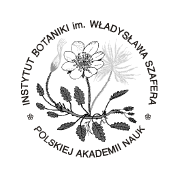 INSTYTUT CHEMII FIZYCZNEJ PAN
INSTYTUT CHEMII FIZYCZNEJ PAN
 INSTYTUT CHEMII ORGANICZNEJ PAN
INSTYTUT CHEMII ORGANICZNEJ PAN
 INSTYTUT FILOZOFII I SOCJOLOGII PAN
INSTYTUT FILOZOFII I SOCJOLOGII PAN
 INSTYTUT GEOGRAFII I PRZESTRZENNEGO ZAGOSPODAROWANIA PAN
INSTYTUT GEOGRAFII I PRZESTRZENNEGO ZAGOSPODAROWANIA PAN
 INSTYTUT HISTORII im. TADEUSZA MANTEUFFLA POLSKIEJ AKADEMII NAUK
INSTYTUT HISTORII im. TADEUSZA MANTEUFFLA POLSKIEJ AKADEMII NAUK
 INSTYTUT JĘZYKA POLSKIEGO POLSKIEJ AKADEMII NAUK
INSTYTUT JĘZYKA POLSKIEGO POLSKIEJ AKADEMII NAUK
 INSTYTUT MATEMATYCZNY PAN
INSTYTUT MATEMATYCZNY PAN
 INSTYTUT MEDYCYNY DOŚWIADCZALNEJ I KLINICZNEJ IM.MIROSŁAWA MOSSAKOWSKIEGO POLSKIEJ AKADEMII NAUK
INSTYTUT MEDYCYNY DOŚWIADCZALNEJ I KLINICZNEJ IM.MIROSŁAWA MOSSAKOWSKIEGO POLSKIEJ AKADEMII NAUK
 INSTYTUT PODSTAWOWYCH PROBLEMÓW TECHNIKI PAN
INSTYTUT PODSTAWOWYCH PROBLEMÓW TECHNIKI PAN
 INSTYTUT SLAWISTYKI PAN
INSTYTUT SLAWISTYKI PAN
 SIEĆ BADAWCZA ŁUKASIEWICZ - INSTYTUT TECHNOLOGII MATERIAŁÓW ELEKTRONICZNYCH
SIEĆ BADAWCZA ŁUKASIEWICZ - INSTYTUT TECHNOLOGII MATERIAŁÓW ELEKTRONICZNYCH
 MUZEUM I INSTYTUT ZOOLOGII POLSKIEJ AKADEMII NAUK
MUZEUM I INSTYTUT ZOOLOGII POLSKIEJ AKADEMII NAUK
 INSTYTUT BADAŃ SYSTEMOWYCH PAN
INSTYTUT BADAŃ SYSTEMOWYCH PAN
 INSTYTUT BOTANIKI IM. WŁADYSŁAWA SZAFERA POLSKIEJ AKADEMII NAUK
INSTYTUT BOTANIKI IM. WŁADYSŁAWA SZAFERA POLSKIEJ AKADEMII NAUK












